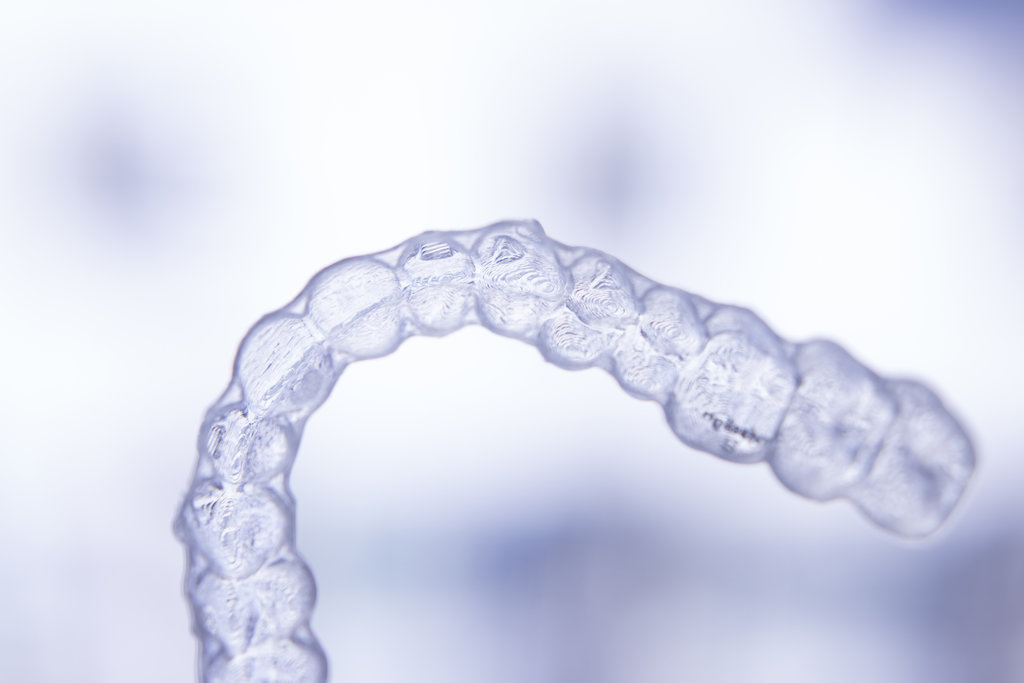Invisalign vs Clear Correct: Which is right for you?
Last updated : January 3, 2017Posted by: Newton Dentistry

If your teeth are in need of alignment, but the idea of traditional wire dental braces has caused you to hesitate over seeking treatment, you may be interested to know that there is another way forward.
Thanks to advances in dental and orthodontic technology, clear aligners custom made to fit your teeth are designed to be nearly undetectable, whilst still performing the same gradual readjustment of your smile as traditional braces.
Known as 'invisible braces', aligners offer a convenient choice for eligible candidates looking to correct the position of their teeth with a more aesthetically pleasing appearance. In addition, aligners can also be removed, making it easier to eat as well as clean your teeth.
To help you better understand the benefits of aligner therapy, here is an overview of two of the most popular options on offer, Invisalign and Clear Correct.
Invisalign
How does Invisalign work?
Aligners are a set of hard, transparent shells that fit snugly over your teeth, meaning that they are practically undetectable. The aligners are made using 3D imaging technology, allowing your dentist to create a highly-customized solution to precisely address your needs.
Unlike traditional braces, aligners are replaced intermittently, with each set designed to gradually move your teeth toward the desired position. Invisalign is a discreet option that can enable patients to get the results they're looking for without the obtrusiveness of wire braces.
As such, Invisalign can be a popular choice amongst teens and adults in professional environments, with over 3 million people having been treated with Invisalign according to the company.
How long does the Invisalign treatment take on average?
The duration of your treatment will vary depending on your individual circumstances. Your dentist will be able to give you an estimate of treatment time, as each patient will have highly-personalized needs.
You'll continue to receive a new set of aligners once every 2-3 weeks until the completion of your treatment.
Am I right for Invisalign?
Invisalign can be used to treat a range of issues such as a cross-bite (misalignment of top and lower jaw), overbite (top teeth overlap lower teeth) or underbite (lower teeth protrude in front of upper teeth), as well as overcrowded or widely spaced teeth.
Whilst the prospect of near-invisible braces may be exciting, it won't necessarily be a suitable treatment for everyone. Your dentist will be able to evaluate your eligibility for Invisalign, as well as suggest alternative options.
Clear Correct
How does Clear Correct work?
Clear Correct has been in business in the US for over eight years, and have now made their aligner treatment available to Australian patients to give them another option when it comes to braces alternatives. In contrast to Invisalign, Clear Correct offers three distinct options for addressing your teeth:
· Limited 6 - This set of aligners works to treat the full arch, not just from the first premolar to first premolar. The Limited 6 is an ideal option for minor adjustments, as it includes six sets of aligners.
· Limited 12 - Provides further range of treatment with 12 sets of aligners. There is no additional fee for revisions of the aligners midway through the process, as long as no extra sets of aligners are required.
· Unlimited - As the name suggests, the Unlimited option allows your dentist to work with as many sets of aligners as are needed to adjust the teeth as needed. This allows for an unlimited number of revisions to your aligners over the space of three years, meaning you dentist is able to continue to make recalculations and adjustments to your treatment as you go.
Of course, if you have chosen a Limited 6 or 12 option and need an extra set or two, you also have the option to order these as recommended by your dentist.
Clear Correct aligners are made from a specialized, hard-wearing material called Zendura, specially designed for ultimate stress retention - meaning that the aligners are resistant to becoming deformed under biting pressure.
How long does the Clear Correct treatment take on average?
This all depends on your treatment option. If you only need to make small adjustments to your smile, your dentist may suggest the Limited 6 option, ideal for cases that can be treated within the timeframe of the six sets of aligners.
Your dentist will provide you with a new set of aligners at four to six-week intervals. Clear Correct estimates that patients wear their aligners for a minimum of 22 hours each day.
Am I right for Clear Correct?
As with Invisalign, while Clear Correct can be used to address a range of problems, it is also a course of treatment that won't be suitable for everyone, so you are advised to talk to your dentist about whether Clear Correct could be an option for you.
Whether you decide to go for Clear Correct or Invisalign, there can be both aesthetic and structural benefits to both, so it's worthwhile discussing your options with your local orthodontist for an initial consultation.




